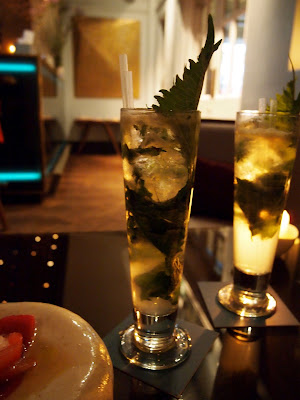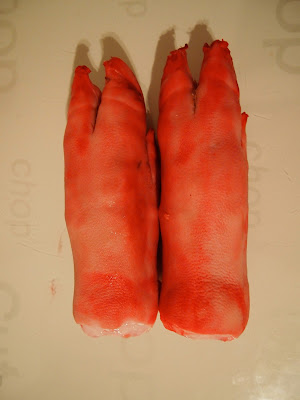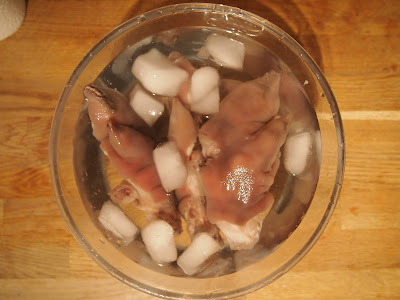Spuntino, Soho
I have heard so many things about this place, on Twitter, in newspapers, on various food blogs... I had got the impression that people either loved it or hated it. It was my turn to try it last Friday, and I LOVED IT.
I have heard so many things about this place, on Twitter, in newspapers, on various food blogs... I had got the impression that people either loved it or hated it. It was my turn to try it last Friday, and I LOVED IT.
Since the restaurant does not take reservations, our plan was to arrive early to beat the crowd. We arrived at around half past six, and there were four empty seats at the bar (from what I could see, all the seats are at the bar, except for a small table at the back), so we got to sit down straight away. We were given a mug of popcorn, and some tap water while we read the menu. I have to mention that the popcorn was delicious - I think it was salt and butter.
I like the atmosphere a lot, very much like a tapas bar. Customers were chatting away with a few drinks, and sharing plates of snack-size dishes. The bar was very busy, but the staff were patiently explaining the menu to customers. By the time we had decided what to eat, there were already ten people queuing up behind the bar. Apparently the waiting time for two people had gone up to 45 minutes.
Now on to the food...
Eggplant chips. Inside the spiced crunchy breadcrumb coating was melt-in-the mouth aubergine. The fennel yoghurt dip which came with it was light and refreshing.
Pulled pork and pickled apple slider (Left). Slices of pickled apple were carefully arranged on the bottom of the burger, topped with a generous amount of pork, and some pieces of crackling. Ground beef and bone marrow slider (Right). It was very enjoyable, cooked medium-well - juicy and oozing with rich meaty flavours. Perfecto!
Truffled egg toast. I had high expectations of this toast, so I was a bit disappointed to find that it was rather bland. A thick slice of white bread was nicely toasted. It was crispy on the outside, with a soft egg yolk in the middle, topped with truffle oil. It looked amazing but sadly I could hardly taste the truffle, and it also lacked the richness from the yolk that would have brought the dish together.
Calamari with chickpeas and ink. A very colourful dish - lightly cooked squid with rocket, tomato, chickpeas and squid ink. It was a mild, comforting dish in contrast with some of the the other heavier dishes we had.
Brown sugar cheesecake and drunken cherries. A smooth and creamy caramel cheesecake, the perfect way to finish our meal.
I am not sure why some people find this restaurant overpriced. I would not say that it is a bargain, but for an average £6 per dish, I would be happy to come back again (and again). There are places in the West End serving gimmicky food without real substance - but this is certainly not one of them. Spuntino, in my opinion, is unique in London, and honest about what it has to offer.















































